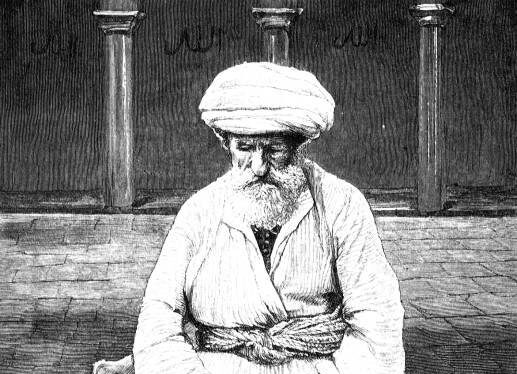Start an Affiliate Marketing Business in 2025 – A Complete Guide
💼 Affiliate Marketing Business in 2025 – A Smart Way to Earn Online
In today’s digital age, where opportunities to earn online are growing daily, affiliate marketing stands out as one of the most profitable and beginner-friendly business models. Whether you’re a student, a stay-at-home parent, or someone seeking a side hustle, affiliate marketing can help you create passive income with low investment.
From weird to wonderful – if you wanna know, we’ve got it covered!
Let’s break down everything you need to know to get started with affiliate marketing in 2025 — from what it is, how it works, how to start, tools you need, and how to actually earn consistently.
🧠 What Is Affiliate Marketing?
Affiliate marketing is a type of performance-based marketing where you earn a commission by promoting other companies’ or individuals’ products. You don’t own the product, you don’t need to ship it, and you’re not responsible for customer service. Your job is to recommend the product to the right people.
If someone clicks on your unique affiliate link and makes a purchase, you get paid a percentage of the sale.
For example, if you recommend a fitness course that costs ₹1,000 and the commission is 30%, you earn ₹300 for every person who signs up through your link.
🕹️ How Does Affiliate Marketing Work?
Here’s a simple 4-step breakdown of how affiliate marketing works:
-
Join an Affiliate Program
You sign up for a program offered by a brand or marketplace (like Amazon, ClickBank, or ShareASale). -
Get Your Unique Link
After joining, you receive a special affiliate link that tracks your referrals. -
Promote the Product
Use your blog, YouTube channel, Instagram page, or even WhatsApp to share the product with your audience. -
Earn Commission
When someone buys through your link, you get paid! Some programs even pay for just getting a lead or sign-up.
💡 Why Affiliate Marketing Is a Great Business in 2025
-
🤑 Low Startup Costs – You can start with just a website or social media page.
-
⏳ Flexible Schedule – Work anytime, from anywhere.
-
💼 No Inventory Needed – Focus only on marketing and content.
-
🔁 Passive Income – Earn even while you sleep.
-
🌎 Global Reach – Promote products to people all over the world.
In 2025, as digital consumption continues to grow, the demand for honest product recommendations and niche influencers is rising — making this the perfect time to start.
🧭 Niches That Perform Best
Choosing the right niche can make or break your affiliate marketing business. Here are some hot niches for 2025:
-
Health & Fitness (weight loss, supplements, workout plans)
-
Tech (gadgets, software, mobile accessories)
-
Personal Finance (credit cards, budgeting apps)
-
Education (online courses, eBooks)
-
Fashion & Beauty (clothing, skincare, grooming products)
-
Home & Lifestyle (kitchen gadgets, home decor)
Pick something you’re genuinely interested in — it’ll help you create authentic and helpful content.
🔨 Tools You’ll Need
To succeed in affiliate marketing, you’ll need a few digital tools:
-
Website Builder – WordPress + Elementor (or Wix/Squarespace)
-
SEO Tool – Ubersuggest, SEMrush, or Ahrefs
-
Email Marketing – ConvertKit or Mailchimp
-
Link Cloaker – Pretty Links or ThirstyAffiliates
-
Content Scheduler – Buffer or Hootsuite (for social media)
Optional but powerful:
-
ChatGPT for writing assistance
-
Canva for designing social posts or infographics
🧑💻 Where to Promote Affiliate Products
You can promote your affiliate links in many ways. Choose one or more channels:
-
✍️ Blog/Website – Create helpful content like reviews, how-to guides, comparisons.
-
🎥 YouTube Channel – Review products, unbox, demo.
-
📲 Social Media – Instagram, TikTok, Pinterest.
-
📧 Email Marketing – Send newsletters or recommendations.
-
💬 Communities – Reddit, Facebook Groups, WhatsApp.
The more value you provide, the more trust you’ll build — and trust equals clicks!
💼 Top Affiliate Networks to Join
Here are some reliable affiliate networks that offer thousands of products and good commission rates:
-
Amazon Associates
-
ClickBank
-
ShareASale
-
CJ Affiliate (Commission Junction)
-
Impact Radius
-
Rakuten Advertising
-
PartnerStack (for software and SaaS)
These platforms connect you with brands across multiple industries.
💰 How Much Can You Earn?
Affiliate income varies, but here’s a rough idea:
-
Beginner: ₹5,000 to ₹25,000/month (~$60–$300)
-
Intermediate: ₹25,000 to ₹1,00,000/month (~$300–$1,200)
-
Pro Affiliate Marketers: ₹1L+ to ₹10L/month ($1,200–$12,000+)
Your income depends on your niche, traffic, and conversion rate. Once you start ranking on Google or building a loyal following, income becomes more consistent.
🔁 Realistic Timeline to See Results
Affiliate marketing is not a “get rich quick” scheme. Here’s a realistic timeline:
-
Month 1–2: Set up website, content, and SEO
-
Month 3–6: Drive traffic, test what converts
-
Month 6–12: Start seeing income
-
Year 1+: Scale and automate for passive income
Consistency and smart strategies are key.
✅ Pro Tips for Success in Affiliate Marketing
-
Be genuine. Promote only what you trust.
-
Don’t rely on one traffic source.
-
Create evergreen content (stays relevant year-round).
-
Test your CTAs, links, and headlines.
-
Always disclose affiliate relationships (for transparency).
⚠️ Challenges You Might Face
-
Getting traffic takes time.
-
Some niches are very competitive.
-
Affiliate links can be blocked by ad blockers or platforms.
-
Payment thresholds or delays (some programs pay only monthly).
But with consistency, these challenges become stepping stones.
🧾 Conclusion
Starting an affiliate marketing business in 2025 can be one of the smartest, most scalable ways to earn online income. With low startup costs, a flexible schedule, and massive earning potential, it’s perfect for beginners and experienced marketers alike.
Start small, focus on quality content, and don’t give up too soon—success will come with time.
From weird to wonderful – if you wanna know, we’ve got it covered!








